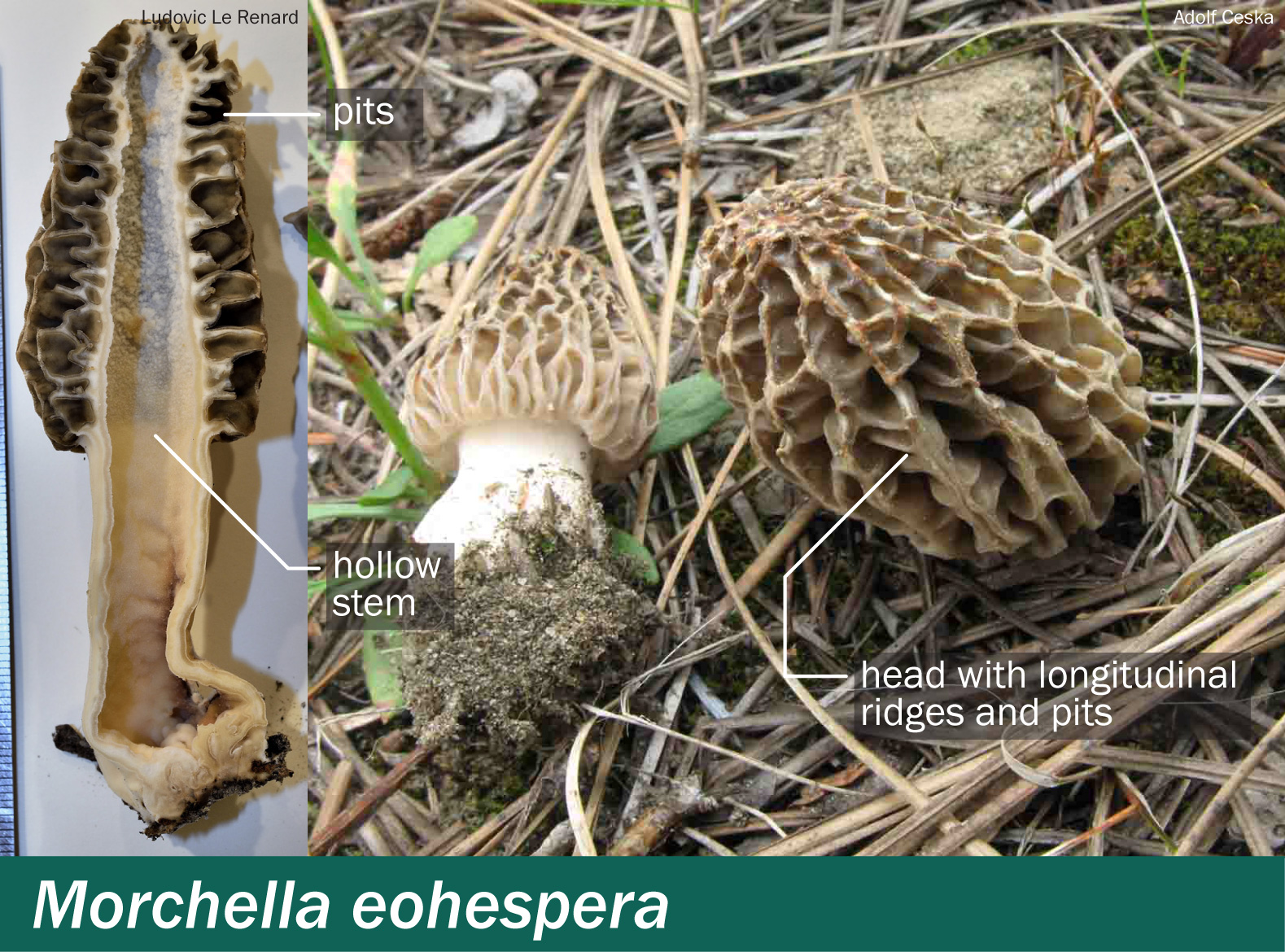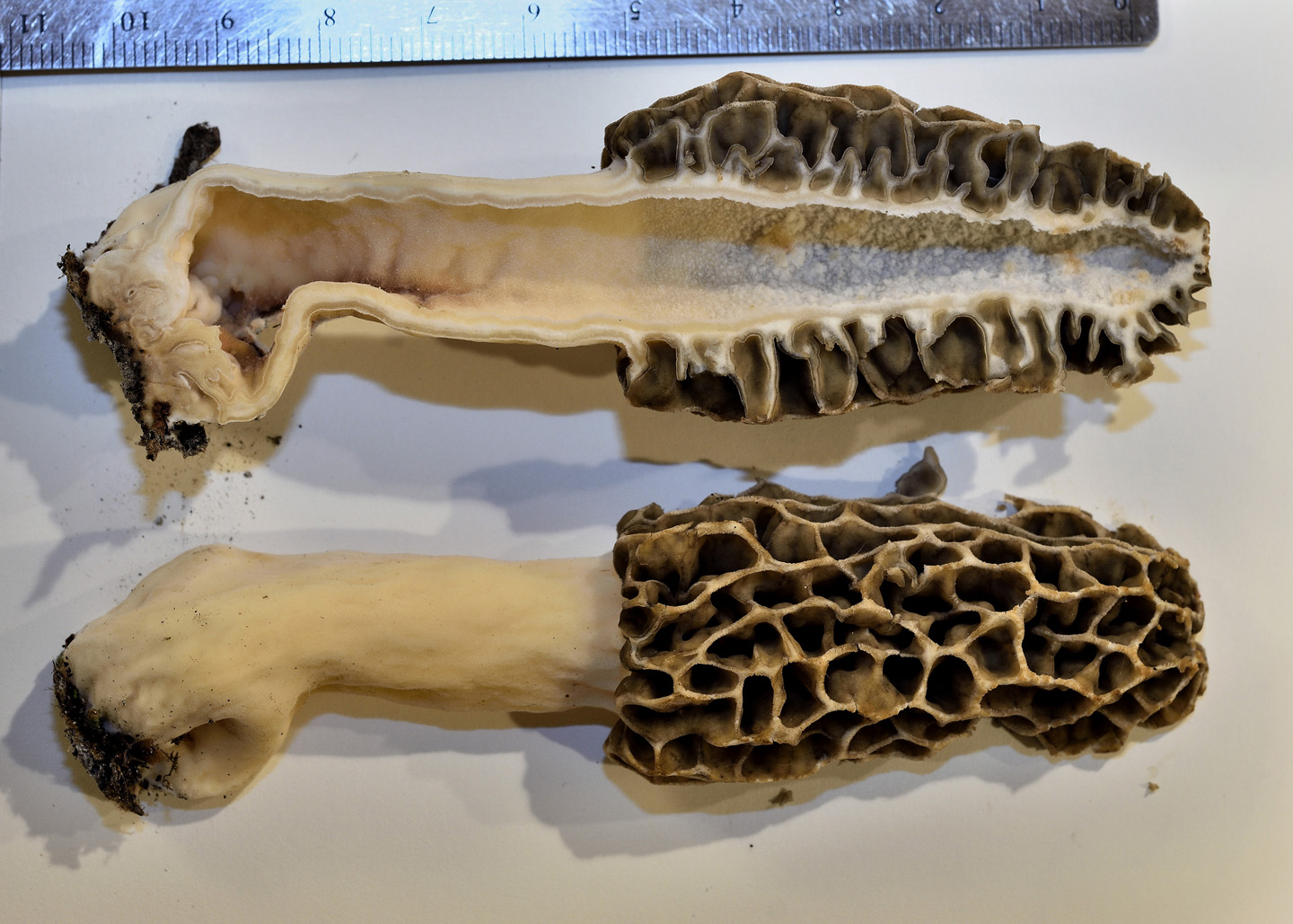Morchella eohespera — Cosmopolitan black morel
Warning: Do not confuse poisonous false morels (Gyromitra species), which have brain-like rounded lobes or saddle-shaped heads with edible true morels. In true morels, the outermost surface of the head has narrow, flattened ridges that form rims around deep pits.
The description of the cosmopolitan black morel applies in large part to other species, although average fruitbody and spore sizes vary.
Odour: Mild.
Head: ~3–6 cm tall, roughly conical, with deep pits rimmed by ridges, beige, tan, brown, or almost black. Cut the fungus lengthwise to verify that it is hollow from just under the tip of the head down most of the length of the stem (see 'field characters'). In most species, the whole head is fused to the stem along its entire length. In Morchella populiphila, a species associated with poplar trees along rivers, the bottom of the head hangs free as a skirt but it is still attached to the stem along its top cm or so.
Stems: 2.5–4 cm long x 1.5–3 cm wide (varies by species, occasionally longer or wider). Usually lighter than the head, whitish to tan. Hollow.
Spores: (18–) 20–24 (–40) x 11–14 (–24) µm, contents homogenous without prominent oil droplets.
Habitat: On ground in forests. Other species of black morels pop up in wood mulch and wood chips; fire morels can be abundant in spring following a forest fire. Whether mainly saprotrophic or ectomycorrhizal remains unclear7,8.
Geographical range: Known from North America, Europe and China, and likely widely distributed across the Northern Hemisphere.
Toxins: unknown. Gastrointestinal symptoms may be due to hemolysins, which damage red blood cells but presumably evaporate or are destroyed by cooking11.
Symptoms: Most common symptoms are gastrointestinal (67%)11. From ~15 min to 13 hours after eating morels, symptoms include nausea, vomiting , cramps, and diarrhea. Neurological symptoms arise 2 hours to 1 day after eating and include vision disorders, dizziness, drowsiness, hand tremors, disorientation, numbness and sensitivity to sound, chills. Most people recovered within a day, although in one individual, tremors lasted for a month11.
Treatment: Contact your regional Poison Control Centre if you realize you or someone you know has become ill after eating morels. Poison centres provide free, expert medical advice 24 hours a day, seven days a week. If possible, save the mushrooms or some of the leftover food containing the mushrooms to help confirm identification.
Poison Control:
British Columbia: 604-682-5050 or 1-800-567-8911.
United States (WA, OR, ID): 1-800-222-1222.
Cases of poisoning from morels:
- In an infamous retirement banquet for Vancouver's chief of police, one of the city's best hotels served a pasta salad containing raw morels that poisoned 77 of the 483 attendees13. Victims reported nausea, diarrhea, vomiting, and cramps. Some reported a hive-like rash, not a usual symptom of poisoning by morels but possibly attributable to another raw mushroom, the shiitake Lentinus edodes, also in the salad.


